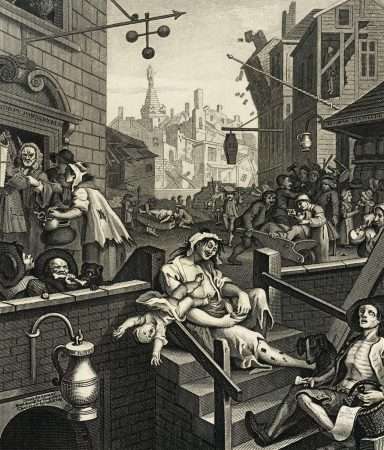A recent publication in The Lancet gave new insight into global alcohol trends.
Some of the data was mildly alarming; some pleasantly surprising. Because alcohol impacts human well-being on many levels, it is important to understand how consumption has changed over time and how it may impact the future.
Rehab Costs & Options for Alcohol | Drugs | Other addictions
Given that alcohol misuse and addiction remains a serious issue in the UK, these statistics allow us to evaluate where we stand in the world. We can look at where we’ve improved, where we could do better, and examine the reasons behind it all.
The Rise and Fall of Alcohol: Trends
Between 1990 and 2017, global alcohol consumption increased from 5.9L (of pure alcohol) to 6.5L per capita. In many parts of the world, consumption spiked after the 2008 financial crisis. The popularity of alcohol is expected to rise further to 7.6L by 2030, in which case it would be a staggering increase of 29% in just 40 years. This will also mean that half of the world’s adults will be drinkers to some degree.
The majority of this can be attributed to Asian countries, even though total consumption levels there are still relatively low. Since 1990, southeast Asian countries have seen a dramatic 104% increase, while western Pacific countries had a 54% increase. In particular, between 2010 and 2017, Vietnam stands out with a 90% increase and India with a 38% increase. China, despite many fluctuations, has also seen an overall rise.
At the same time, while European countries, including the UK, still lead the world in alcohol consumption, the general trend is that drinking is decreasing. Since 1990, alcohol consumption in Europe has dropped by 20%. It is expected that by 2030, Europe will lose its rank in having the highest rates of alcohol consumption per capita.
Surprisingly, a lot of this comes from former Soviet countries, such as Russia, Belarus, Ukraine, and Azerbaijan. However, the UK has made a lot of progress as well. If between 2010 and 2017 Europe saw a decrease in consumption by 12%, the UK had an impressive decrease of 7.4%.
Abstinence
The number of abstinent adults globally has slightly decreased from 46% to 43%. It is expected to go down by another 3% by 2030.
In the UK, only 20.4% of the population is abstinent, most of which are young adults. In fact, teetotalism is becoming a trend among the British youth. Although the same cannot be said for those over 65, for whom abstinence rates have decreased.
People Are Drinking More
One concerning finding was that levels of alcohol consumption are growing faster than the population. This means that people, on average, are drinking more, even in countries where average alcohol intake is decreasing.
In addition, heavy (or binge) drinking, which is defined as 60g of pure alcohol per occasion within 30 days, has grown as well. Currently, 20% of people worldwide engage in heavy drinking, up from 18.5% in 1990. Like overall consumption, heavy drinkers are most prominent in the western Pacific.
In Great Britain, 27% of the population are classified as binge drinkers – much higher than the global average. And despite the fact that young people in Britain are more likely to be abstinent, they are also more likely to binge drink. Of young adults who do imbibe, 30% admit they “drink to get drunk”.
Men vs. Women Drinkers
The male-to-female ratio of alcohol drinkers is relatively stable around the world, with more men drinkers than women. However, this gender gap is also narrowing, especially in countries where consumption is high overall. It is expected to decrease the most in the western Pacific and eastern Mediterranean countries.
In the UK, that gender gap is even narrower, with British women now among the world’s heaviest drinkers. This is worrying as well because alcohol misuse tends to affect women more.
What Affects Alcohol Trends and Consumption Levels?
There are a number of reasons why alcohol consumption levels may vary from country to country and change after time. Understanding this can help us understand how to reduce the alcohol problem of the UK and the world. The three most significant factors are:
- Economic Wealth
- Religion
- Alcohol Policies
However, there is no combination of these that can determine a country’s stance on drinking. Rather, it seems more complicated.
Economic Wealth
Low-income countries have seen very little change in consumption rates, but that has generally always been true. If there is no disposable income to spend on alcohol, alcohol cannot be bought.
Before the 1990s, the majority of alcohol was consumed in high-income countries. Now, it seems that the tide has shifted. Instead, middle-class countries, especially those with growing economies, such as China, India, and Vietnam, are taking the lead.
Meanwhile, it is mainly high-income countries, especially UK and Europe, that are seeing a decrease or stabilisation in alcohol consumption. However, some countries, such as the US, has seen a small increase in consumption. There has also been a lot more alcohol-related health issues and mortalities in line with this rise.
This can be also seen on a smaller scale. In the UK, high-income people drink more than low-income people. However, low-income people are more likely to end up with drug problems, especially heroin or crack cocaine.
Religion
Religion definitely plays a big role in many countries on alcohol trends. Muslim countries and those with a religion that forbids alcohol obviously have little to no alcohol consumption. Even in ultra-wealthy countries such as Saudi Arabia and Brunei. This shows that the concept of a “higher power”, such as that used in AA, can be a powerful factor. However, religion cannot be imposed on people.
Instead, you can introduce new societal norms. Clearly, this has been a success, as seen in many high-income countries in the case of alcohol and smoking. Since the introduction of anti-smoking and anti-drinking campaigns, more of the younger generations have been doing less of both. Such countries are also more likely to promote a healthy lifestyle, which can have an effect on consumption.
Alcohol Policies
Alcohol policies cover a wide range of rules and regulations. These can be age limits, added alcohol tax, general legality, marketing restrictions, or even treatment options. All of these can affect what age people start drinking and the level of drinking, dramatically.
Russia is one of the prime examples of implementing such policies. They have restricted availability, such as what hours your can buy alcohol or where you can buy it. They have also increased tax on alcohol and banned or restricted alcohol-related marketing. As a result, the country has seen a 22% decrease in alcohol consumption over the past seven years.
Since alcohol consumption is due to rise globally, we may see a rise in addiction too. The majority of alcohol consumption is increasing in Asia, where rehabs are often less prominent compared to the West. Given this, alcohol policies and treatment programmes in Asia could become a key factor in tackling new problems with addiction.
Can Minimum Pricing Have an Effect on Alcohol Trends?
Those with a high income tend to spend more on drinks, while low-income individuals buy cheaper booze. So people who are used to a certain drinking culture may adjust their level of spending but not necessarily level of drinking.
While price controls have shown success in countries like Scotland, the difference it makes is very little. And people who want to drink may adjust their spending habits. Furthermore, in most countries, including the UK, alcohol is highly affordable compared to decades ago.
Therefore, a price hike would have to be dramatic to make an impact. Rather, it may be wise to implement a mix of alcohol policies to improve the situation in the long-run. However, too many rules or regulations can cause other problems as well, as seen during the prohibition period. In the meantime, governments shouldn’t ignore support services
In the UK, there have already been successful national health campaigns we can look to. For example, the smoking ban and regulations, have dramatically reduced the numbers of UK smokers. With a strong lead from the government, similar techniques of pricing, persuasion and legislation could have a dramatic effect on alcohol consumption too. Whether the government has the will to challenge the powerful drinks industry on this crucial matter remains to be seen.
Get Help Today
At Castle Craig Hospital, we recognise the importance of treatment availability in alleviating the impact alcohol has on the community. We have helped thousands of people all over the world recover from alcoholism as well as other addictions. With 30 years of expertise, we have developed a unique treatment model, including the 12 steps with a fully medically managed team.
If you are concerned about your or someone else’s drinking, consider giving us a call. We can familiarise you with treatment options and offer advice on what to do next. Our offices can be reached at +44 1721 726 135 (UK) or +44 1721 722 763 (International).



